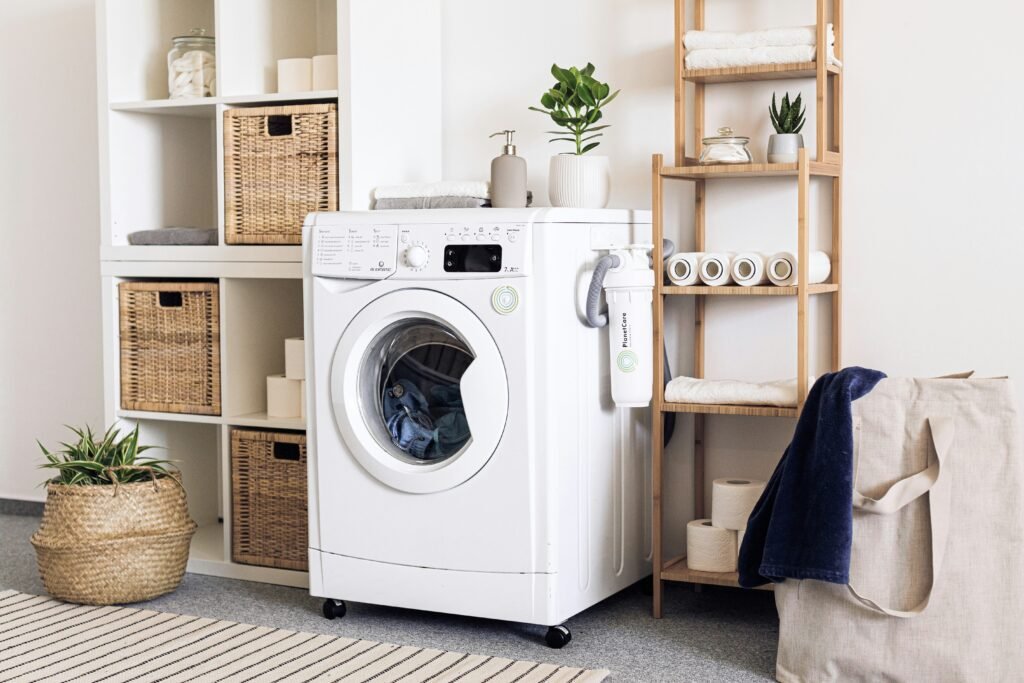
Introduction
Did you know that home gardens can boost biodiversity by over 50% when they’re planted thoughtfully? That’s not just good news for the bees – it’s a game changer for your backyard too. A study from 2023 by the University of Bristol found that good home gardens help more pollinating insects. This results in more flowers and colors that last longer.
Spring gardening isn’t just tossing a few seeds into the dirt and hoping for the best. Creating a truly impressive spring garden, overflowing with flowers from March through May, involves a bit of knowledge, preparation, and a mix of creativity and science.
But don’t worry, it’s not rocket science, and it’s definitely not reserved for people with green thumbs.
This guide isn’t about perfection. It’s about helping you craft a spring garden that feels alive all season long, supports your local environment, and actually makes you want to spend time outside. Whether you’ve got a tiny patch of land or a full suburban yard, these five expert tips will set your 2 spring gardens up to thrive and create picturesque spring garden roads throughout your yard. Plus, if you want to see more inspiration, check out springgardens online for fresh ideas.
Importance of Spring Gardens

Spring gardens do more than just look pretty – they signal a fresh start. When winter finally lets go, your yard becomes a canvas. You’re not just planting flowers; you’re inviting life back in. That includes bees, butterflies, hummingbirds, and yes, even some helpful bugs that keep pests in check.
Studies show that spending just 20 minutes in a green space can reduce stress levels by up to 30%. So, while you’re out there pruning and planting, you’re also helping your mental health. And let’s not forget: a well-kept garden can raise your home’s value by as much as 10%, according to Realtor.com.
Now let’s dig into what really makes spring gardens stand out.
Tip 1: Choose the Right Location

Sunlight Isn’t Optional
Most flowering plants need at least 6 hours of sun a day to bloom properly. Without it, you’ll end up with leggy stems, weak blooms, and a garden that just looks… tired.
Before you plant anything, spend a couple of days watching where the sun hits your yard. Is your spot full sun from morning to evening? Or does it get a blast of light in the morning and then fall into shade by lunchtime?
Here’s a quick real-life example: if you’re planting tulips or peonies in a shaded corner behind your garage, they’ll grow leaves—but not much else. Move them to a sunny spot by your fence, and suddenly you’ve got color that lights up your whole yard.
Don’t Forget Water Access
Ever tried dragging a 50-foot hose across your yard every other day? It gets old fast. Choose a spot within reach of your water source or set up a rain barrel nearby. Plants grouped by water needs make life easier – think of it as “hydration zoning.”
And if you’re a little tech-savvy, installing a basic drip irrigation system can save water and make your mornings easier. Deep watering less often is way better than a daily splash—it helps roots grow deep and strong, which means happier, more drought-resistant plants.
Tip 2: Select the Perfect Plants

Think in Bloom Cycles
The secret to a spring garden that stays stunning all season? Staggered bloom times. You want a garden that unfolds like a story – something always new to look at.
Start with early bloomers like crocuses and snowdrops – they’re your opening act in March. Follow up with tulips and daffodils in April. Then let irises, alliums, and columbines take over in May. By layering plants this way, your garden evolves as the weeks pass.
Native vs. Non-Native? Mix It Up
Native plants are the low-maintenance MVPs of your garden. They’ve evolved for your climate, your soil, and your bugs. That means less work and fewer issues. Purple coneflowers, milkweed, and black-eyed Susans are some go-to choices across much of the U.S.
But don’t be afraid to throw in a few non-natives for personality. Just steer clear of invasive species (looking at you, English ivy). Japanese maples, lavender, and dahlias can add bold colors and textures that native plants sometimes lack.
Think of your garden like a potluck – every plant brings something different to the table.
Tip 3: Prepare Your Soil

First, Know What You’re Working With
Skipping a soil test is like baking a cake without knowing what ingredients you have. A simple DIY soil test kit from your local garden center or home improvement store can tell you your pH level and nutrient deficiencies.
Most flowering plants like slightly acidic to neutral soil (between 6.0 and 7.0 pH). If your soil’s too alkaline or too acidic, it’ll block certain nutrients—no matter how much fertilizer you throw at it. In a real-life situation, a gardener in North Carolina consistently faced the problem of yellowing leaves each year. Eventually, a soil test uncovered that the pH levels were too high.
A few tweaks later (and a handful of sulfur), her garden bounced back with full color.
Feed Your Soil, Not Just Your Plants
Healthy plants start with healthy soil. Add compost, aged manure, or leaf mold to enhance texture and boost nutrients. Your soil should feel crumbly and slightly moist, not hard-packed or sandy.
And remember, over-fertilizing is a real problem. It doesn’t make plants grow faster—it just burns their roots. Use organic fertilizers or slow-release options if you must feed beyond compost.
Tip 4: Create Visual Interest

Layer Like You’re Designing a Room
Spring gardens with only one height are… boring. You want levels: tall at the back, mid-height in the middle, and short or trailing plants in the front. This creates depth and makes even a small garden feel full and inviting.
Try this layout: tall delphiniums or hollyhocks along the back, mid-level peonies or daylilies in the center, and creeping thyme or phlox near the border. It’s a simple trick, but the visual payoff is huge.
Color contrast matters too. Deep purples next to bright yellows? Gorgeous. Mix fine and coarse textures – like the feathery fronds of ferns next to broad hosta leaves.
Add Hardscapes for Balance
Pathways, birdbaths, garden benches – they aren’t just practical, they break up all that green with structure. Use stone, gravel, or reclaimed brick to build paths that guide visitors (and yourself) through your space. These can also act as spring garden roads, weaving through the greenery to highlight the beauty of your flowers.
Even something as small as a weathered wooden bench or a repurposed wine barrel planter adds charm. Bonus: hardscapes don’t wilt in the heat, and they don’t need watering.
Is there a slope in your yard? Use a low retaining wall to terrace your space and give your plants more room to shine.
Tip 5: Maintenance for Longevity

Watering Wisely
Spring weather is moody-sunny one day, soaked the next. That’s why you’ve got to be water smart. Early mornings are best. The soil soaks it up, the leaves dry quickly, and there’s less evaporation.
Aim for deep watering once or twice a week rather than a daily sprinkle. A simple soil moisture meter (they’re under $15) takes the guesswork out of it.
And here’s the kicker: plants actually grow stronger when they work a little for their water. Shallow roots equal weak plants.
Keep the Bugs in Check – Naturally
Skip the pesticides. Instead, plant herbs like basil and mint to repel pests. Let ladybugs, lacewings, and praying mantises do their thing. They eat the bad guys – no chemicals required.
Companion planting works wonders too. Marigolds near your tomatoes? Fewer nematodes. Nasturtiums around your beans? Aphids stay away.
Also, don’t let dead leaves and garden clutter build up. It’s like a five-star hotel for pests. Keep things tidy, and you’ll cut down on problems before they start.
Conclusion

A gorgeous spring garden doesn’t happen overnight. But with a little planning and a few smart choices, it can bloom from March to May and still have energy left for summer.
Start with the right spot – sun and water are non-negotiable. Pick plants that bloom in waves and suit your local climate. Feed your soil, not just your flowers. Add layers, contrast, and structure. And take care of it like you actually enjoy it – because chances are, you will.
What is the best part? You’re not just growing flowers. You’re growing a space you’ll want to spend time in. A spot for your morning coffee. A haven for bees. A backyard that feels like yours.
So roll up your sleeves, grab your gloves, and get started.
FAQs for Creating a Stunning Spring Garden
What are the best plants for a spring garden?
Look for staggered bloomers. Start with crocuses and snowdrops, move to tulips and daffodils, and finish with irises or columbines.
How much sunlight do garden plants need?
Most spring bloomers want 6 – 8 hours of direct sun. Some shade-loving plants are fine with less, but do your homework.
Do I really need to test my soil?
Yes. It’s cheap, easy, and could save you months of frustration. Know what your soil is missing before you start fixing it.
How often should I water my garden?
Deep watering spring gardens once or twice a week is better than daily shallow watering. Always check the soil before grabbing the hose.
Can I mix native and non-native plants?
Absolutely. Just avoid invasive species. Native plants are low-maintenance, and non-natives can add flair.
What are some natural ways to control pests?
Thank you for visiting CerebraVoyage!

